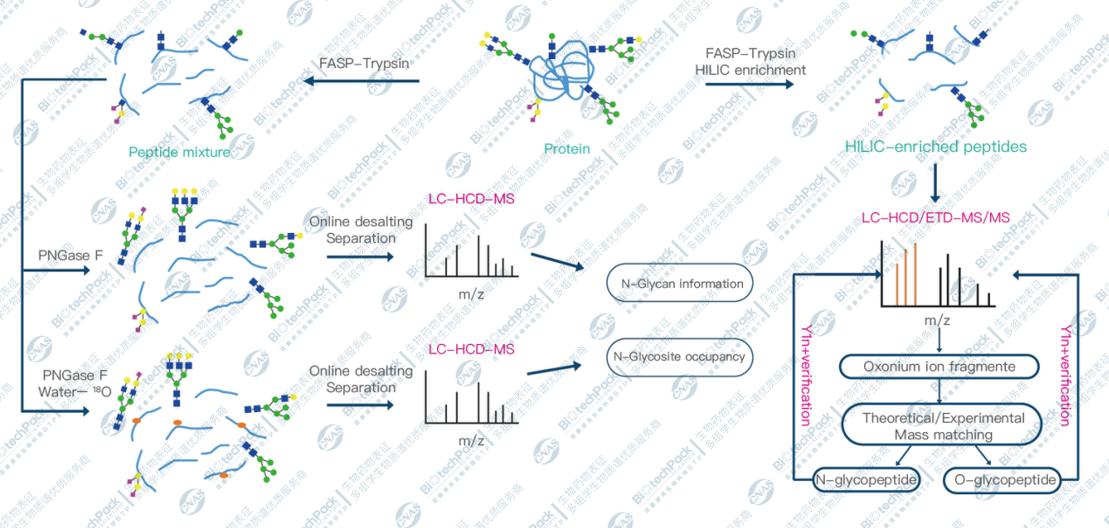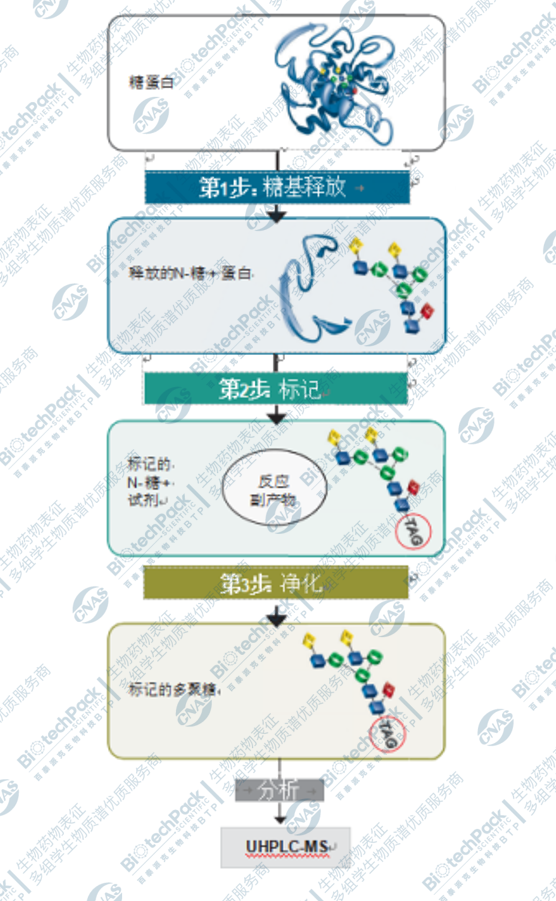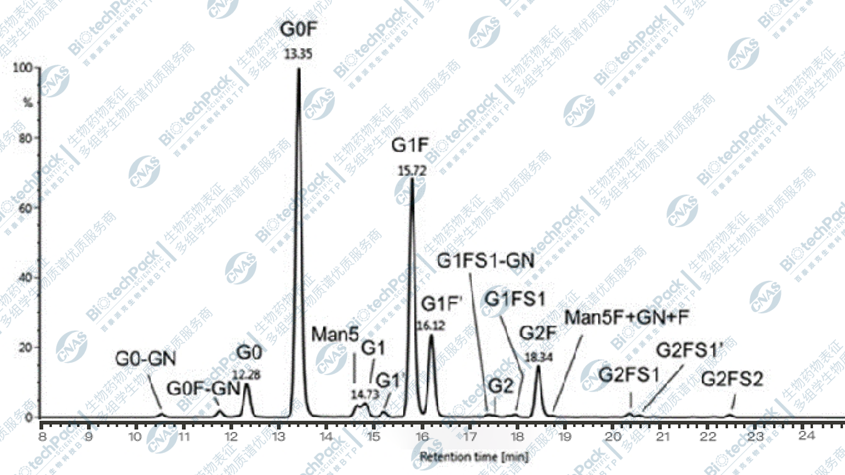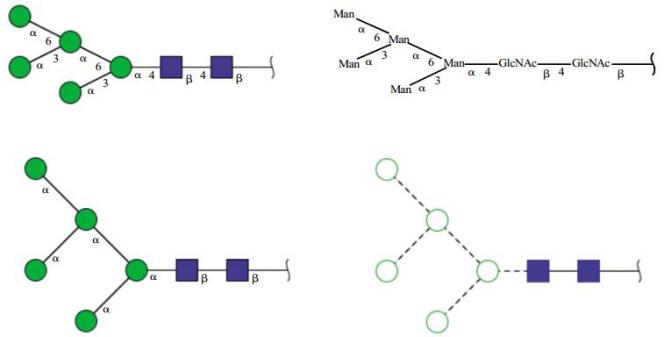Oligosaccharide Chain Structure Analysis
Glycosylation significantly affects the efficacy, stability, and immunogenicity of biopharmaceuticals. The oligosaccharide profile and glycan structure are important indicators for evaluating the characteristics of biopharmaceuticals. Oligosaccharides, as important carbohydrates, are involved in various cellular processes such as protein folding and signal transduction. Furthermore, oligosaccharides often bind with proteins to form glycoproteins. Glycoproteins are usually located on the cell surface, participating in the recognition of bacteria and viruses, and interacting with other proteins like lectins, which are crucial for the proper functioning of biopharmaceuticals.
The synthesis of oligosaccharides does not occur through a templated manner and presents a branched structure, increasing the complexity of oligosaccharide structural analysis. To address this, BTP developed a series of stable and efficient liquid chromatography-high-resolution mass spectrometry (LC-MS/MS) characterization methods. These methods encompass a complete analytical workflow from glycan analysis and glycosylation site identification to glycopeptide analysis. Through these methods, we can effectively study and analyze the structural and functional characteristics of oligosaccharides, thereby better understanding the impact of glycosylation on biopharmaceuticals. The basic workflow for glycosylation analysis is shown below:

Figure 1 Glycosylation Analysis Workflow
Basic Principles
The analysis of oligosaccharide chains usually utilizes a high-resolution mass spectrometry platform coupled with liquid chromatography. Firstly, PNGase F glycosidase is used to cleave glycans from glycoproteins. Subsequently, the hydrolyzed glycans are derivatized and labeled using 2-AB reagent. After labeling, the glycan samples are injected into the liquid chromatography-high-resolution mass spectrometry platform for data acquisition. The collected raw mass spectrometry data is then structurally analyzed using glycan analysis software.
During the analysis process, the liquid chromatography equipment is equipped with a fluorescence detector for glycan quantification. Meanwhile, the tandem high-resolution mass spectrometry system is used for glycan structural analysis and identification. These analytical methods combine mass spectrometry and chromatography techniques to effectively reveal the structure and characteristics of oligosaccharide chains.

Figure 2 Experimental Workflow
Experimental Instruments
HILIC-UHPLC/AB SCIEX 5600+
Exhibition of Experimental Results
N-glycan analysis based on HILIC-UHPLC-MS/MS is currently the mainstream analytical method. Hydrophilic interaction chromatography (HILIC) is used for the separation of N-glycans. Through the reaction of PNGase F enzyme, N-glycans are released. Subsequently, the released glycans are derivatized using 2-aminobenzamide (2-AB). This derivatization allows for the analysis of a large number of N-glycans. The derivatized N-glycans are detected by HILIC-UHPLC-MS. Finally, specialized software is used for automated structural analysis to obtain the results. This method efficiently analyzes N-glycans, providing an effective means for studying the structure and characteristics of N-glycans. The results of N-glycan types and glycan structure analysis are displayed below:

Figure 3 N-glycan Types of Samples

Figure 4 Glycan Structures Corresponding to N-glycan Types of Samples
*The above are glycan types and glycan structures obtained from mass spectrometry data analyzed by software.
CommonProblems
Question 1: What are the common representations of oligosaccharide structures?
Answer:Common representations of oligosaccharide structures are:

Question 2: What are the roles of the fluorescence detector and mass spectrometry?
Answer:The fluorescence detector is mainly used to detect the intensity of fluorescent signals, which can be used for quantitative analysis. In glycosylation analysis, the fluorescence detector is typically used for the quantitative determination of glycan content because glycans, after derivatization labeling, exhibit fluorescent properties. The intensity of the fluorescent signal is proportional to the glycan content.
Mass spectrometry is primarily used to determine the molecular mass and structural information. In glycosylation analysis, mass spectrometry can be used to determine glycoforms, i.e., to analyze the composition and sequence of glycans as well as to determine modification sites and modification efficiency. Through mass spectrometry, one can obtain important parameters of glycan mass information, such as molecular weight, carbohydrate composition, and modification positions.
In glycosylation analysis, the fluorescence detector and mass spectrometry are usually collected simultaneously. The fluorescence detector provides quantitative information on glycan content, while mass spectrometry provides structural information on glycoforms. By integrating these two technologies, one can determine the glycoform and proportion of glycoproteins, thereby gaining a more comprehensive understanding of the characteristics and impacts of glycosylation.
Related Services
How to order?





